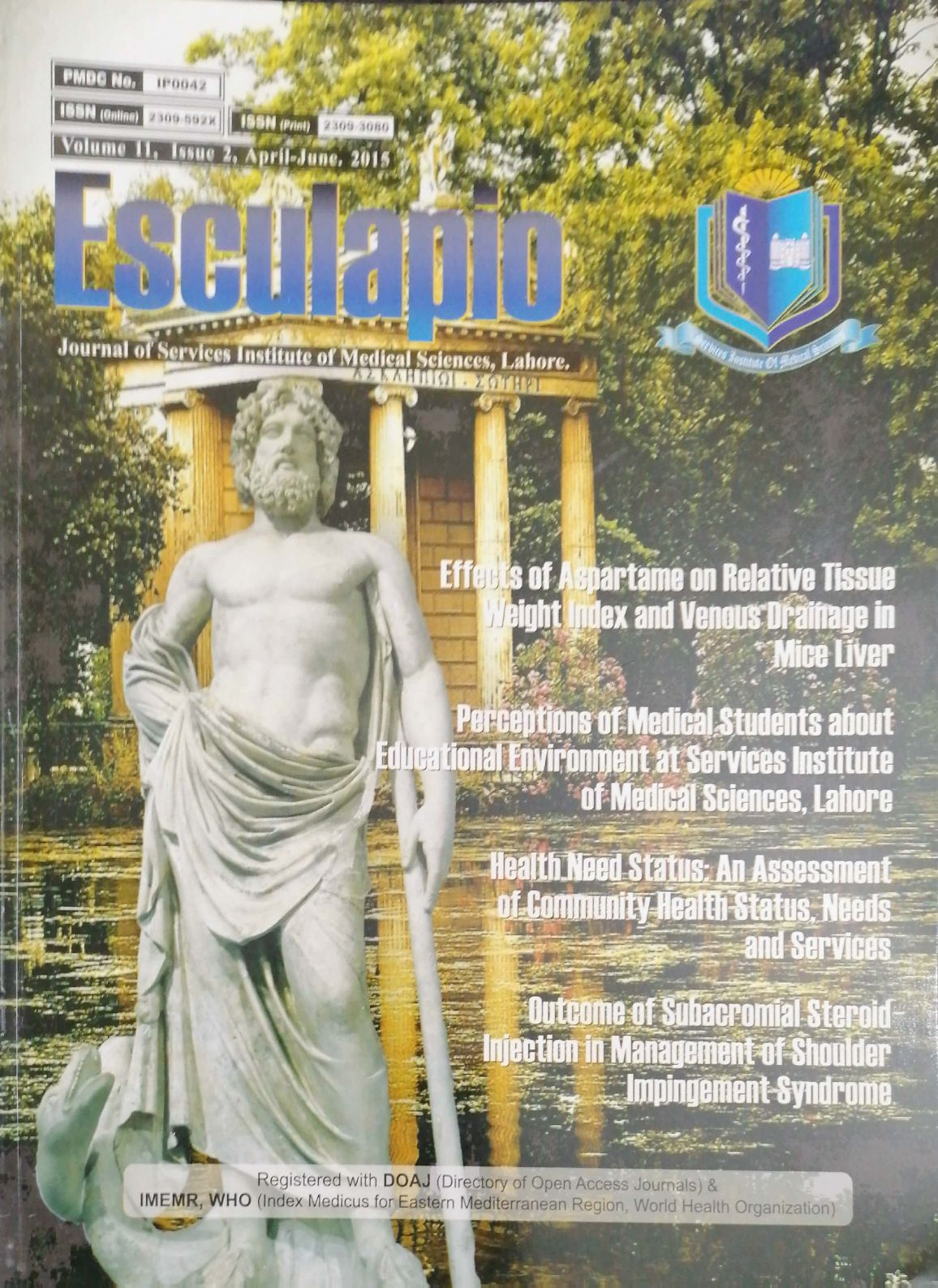Pharyngocutaneousfistula; Its Causes and Management
DOI:
https://doi.org/10.51273/esc15.71128Keywords:
Pharyngocutaneous fistula, causes, outcome, total laryngectomyAbstract
Objective: To study the various causes and management of Pharyngocutaneous fistula in total
laryngectomy .
Material and Methods: 40 patients underwent total laryngectomy in service hospital Lahore
From May 2003 to December 2014. The patients were prospectively studied regarding formation
of Pharyngocutaneous fistula in the following aspects age, tumor site, stage of disease, primary
repair, infection and recurrence of tumor.
Results: Pharyngocutaneous fistula was diagnosed in 9 patients (22%) out of 40. Fistula
developed in 2 patients (22%) on 3rd day due to rent in repair. 5 patients (55%) had fistulae due to
infection on 8th day and 2 patients (23%) due to presence of residual tumor on 15th day.
Pharyngocutaneous fistula is common complication which occurs after total laryngectomy. Three
patients previously submitted to tracheostomy had fistula out of 5patients6O %( higher incidence)
as compared to the 6 patients out of 35(17%) without tracheostomy. The reported incidence
ofpharyngocutaneous fistula is extremely variable in literature ranging from 13% to 25% and in
our series it is about 22 %.
Conclusions: Spontaneous closure is possible with proper wound care, good nutrition and
antibiotics. 7 cases out of 9 in our series heeled with conservative treatment. Incidence of
Pharyngocutaneous fistula formation is more in supraglottic, previously tracheostomised patients
and also in advanced stage. In some patients surgical intervention is needed to close the fistula by
flap. We used deltopectoral flapin two patients.










